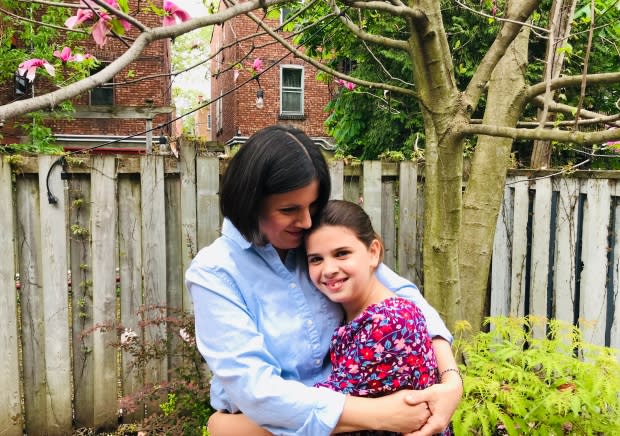Understanding celiac disease changes everything — especially for kids like mine
When people learn my 11-year-old daughter has celiac disease, they often reply that "it's a lot easier than it used to be" to live with the condition.
They're not wrong — there are more gluten-free products than ever before. But "easier" still doesn't mean easy.
Adele was diagnosed with celiac disease in September 2018. She cried a little, then baked a big chocolate cake and invited the neighbours for a "Goodbye, Gluten" party. They made her cards, calling her a tough cookie. The next day, I boxed up all the food in the house that contained gluten. Anything with wheat, barley, or rye was given away.
Celiac disease isn't an allergy: it's an often-hereditary autoimmune disorder where the body attacks itself. The target of the attack is the lining of the small intestine, which is covered with little finger-like structures called villi that capture all the good nutrients that keep us healthy.
When my daughter eats gluten, her villi are attacked and worn down. Bye, fingers that catch nutrients. Hello, list of symptoms that can include stomach pain, diarrhea, anemia, joint problems, bone issues and problems with dental enamel, to name just a few.

The smallest amount of gluten can cause problems for a person with celiac disease: just a tiny crumb is enough. The frustrating thing is that gluten is EVERYWHERE. We're not just talking about breads and pasta. There is gluten in soy sauce, canned soups, crackers, most cereals, salad dressings, bottled sauces, vitamins, candy and spices. It's also in some shampoos, lotions, lip balms and modelling clay. If a label says "may contain wheat," Adele can't have it.
Ingredients aren't the only thing she has to worry about. Cross-contamination is also a concern for people with celiac disease. If a fryer, cutting board, knife or spatula come into contact with foods with gluten, they aren't safe for Adele. That means eating in restaurants is almost impossible now; there's no more "just stopping for a bite" while we are on road trips.
One time, Adele circled a shopping centre food court for 15 minutes before realizing the only safe thing for her to eat was plain white rice. And a "gluten-free" label doesn't guarantee safety for people with celiac disease; if the food was processed in a facility that also processes foods with gluten, there's still a risk.

Adele's diagnosis has meant a lot of changes at home, too. The only gluten we have in the house is a single loaf of bread and some granola bars, stored in a separate cabinet. We know that just a crumb is enough to make Adele seriously ill, so we are fastidious. Condiments are separated, which means two jams, two peanut butters, two jars of mayonnaise. We have two toasters and wipe down surfaces carefully. We read labels obsessively. We also pay a lot more for food; gluten-free items generally cost two or three times more than regular products.
We know that there are far worse things than celiac disease, and Adele rarely complains, but it's still not fun for an 11-year-old. Her school has a monthly pizza day, and her class routinely celebrates birthdays with cupcakes. Adele misses out every time. She has always loved baking and finds that most of her recipes don't turn out the same when made with gluten-free flour.
At Halloween, she had to give most of the candy she'd collected to her big sister. She's given up her beloved Swiss cheese crackers and missed cookie parties at friends' houses. She is a shy child and hates having to explain celiac disease every time she eats away from home. Adele also hates the fact that unless there's a cure, it will be like this for the rest of her life.
Living with celiac disease, in Adele's own words:
Despite the challenges celiac disease has brought, we've seen a lot of good, as well. Family and friends work hard to make sure Adele feels included and educate themselves to make meals safe for her. We've been impressed by the efforts some restaurants are making, and we're delighted to see the Olympic Stadium and CN Tower lighting up green this month for celiac disease awareness.
Since Adele was diagnosed, we have come to realize how important awareness is for people with celiac disease. It helps so much when people understand that Adele isn't being difficult when she asks questions about how the food was prepared or has to refuse food altogether, because it only takes a crumb to do serious damage to her body. For people like Adele, awareness and understanding is what will truly help to bridge the gap between "easier than in the past" and "easy."

